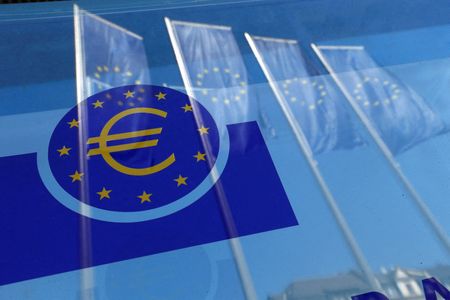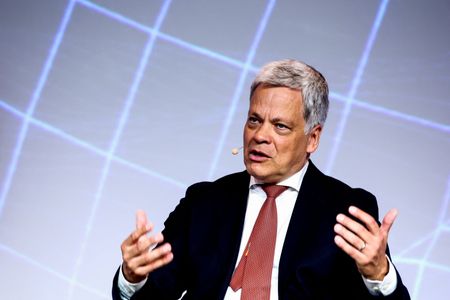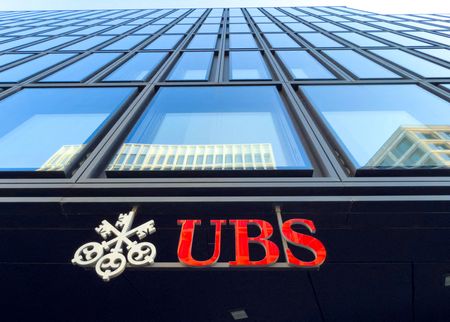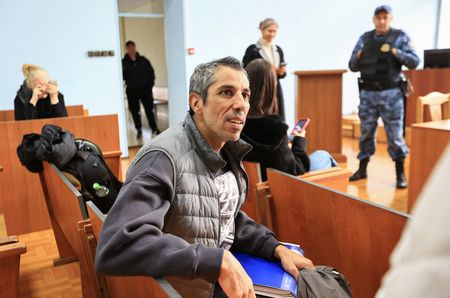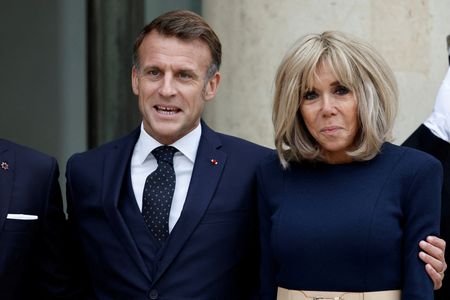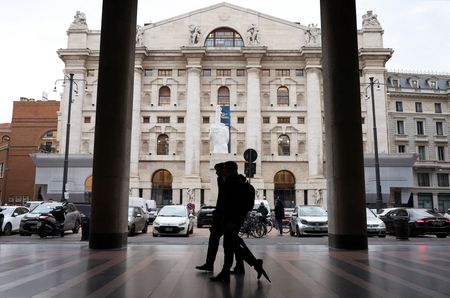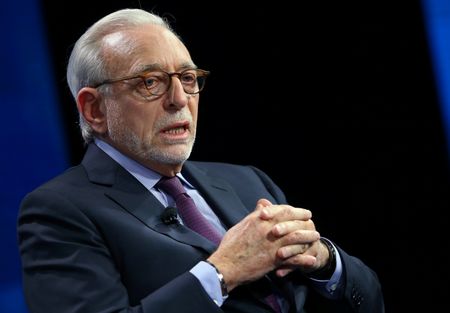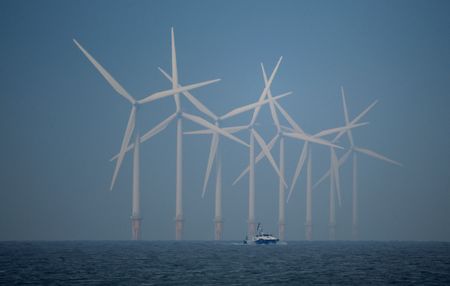By Yoruk Bahceli and Stefano Rebaudo
LONDON/MILAN (Reuters) -The European Central Bank will likely keep rates on hold again on Thursday as traders waver on whether it will resume easing next year.
Renewed U.S.-China trade tensions prompted caution in markets earlier in October but strong data and signs of progress towards a deal mean traders have trimmed rate cut bets again.
Here are five key questions for markets:
1/ What will the ECB do this week?
Hold rates at 2% for the third meeting running.
Not much has changed since September, when policymakers said the economy was in a “good place”. They are yet to see the full impact of U.S. tariffs and the euro, whose 12% rise this year risks driving inflation down, has dropped.
“This is just an interim meeting. The more significant one will be in mid-December,” said UBS chief European economist Reinhard Cluse.
2/ Inflation is back above target. Is the ECB worried?
No. Euro zone inflation rose to 2.2% in September, above target for the first time since April, as services prices rose and energy cost declines slowed.
That was in line with expectations. The ECB sees inflation dropping to 1.7% next year and staying below target through mid-2027.
Policymakers broadly see inflation risks as balanced, but more seem worried about the risk of weaker rather than stronger inflation, ECB September meeting minutes suggested.
“Near-term inflation risks are to the downside, due to the stronger euro and the disinflationary impulse from Chinese exports,” said Paul Hollingsworth, head of developed market economics at BNP Paribas, referring to risks of China dumping surplus exports into Europe.
Upside risks on the back of German stimulus are more medium term, he added.
3/ Why are traders moving back and forth on 2026 rate cut bets?
Markets were initially concerned about escalating trade risks after U.S. President Donald Trump unveiled additional levies on Chinese imports earlier in October.
So, traders priced in around an 80% chance of a 2026 rate cut, a big shift from September, when a hawkish-sounding ECB had led markets to price out such a move.
But data last week suggesting the euro zone economy is gaining momentum and Trump saying he hoped to close a trade deal with China this week have led traders to dial back bets again.
They now see just under a 50% chance of a cut by end-2026.
4/ Economic uncertainty remains high. What does that mean for ECB policy?
It underscores why policymakers have not closed the door on further cuts.
ECB chief economist Philip Lane says downside risks would strengthen the case for “slightly lower” rates and upside factors for staying on hold. Euro zone banks may come under pressure if dollar funding dries up, he has also warned.
The impact of U.S. tariffs and the potential for trade tensions to escalate remain the main downside risks, economists said.
Further euro strength and German stimulus kicking in slower than expected could also prompt another cut, UBS’s Cluse said.
The ECB also says AI-driven market valuations raise the risks of an abrupt repricing in global markets that could hurt the euro zone.
France’s budget uncertainty is unlikely to sway the ECB’s thinking, but the Socialists on Friday renewed the risk of a government collapse.
5/ Where does the ECB stand in the debate around using frozen Russian assets to help Ukraine?
It has no official say, but the ECB does not want the euro’s credibility to be damaged at a time when there is an opportunity to boost the currency’s global clout.
Many EU governments want to invest Russian cash stuck at Belgium’s Euroclear repository from matured Russian bond holdings into zero-coupon bonds issued by the bloc, then use the proceeds to lend to Ukraine.
Russia would retain its claim over the assets, avoiding an outright confiscation – the most euro-negative scenario. Russia has said it would deliver a “painful response” to any such move.
ECB chief Christine Lagarde says the EU must follow international law in the process and would prefer all countries holding Russian assets and cash to similarly lend to Ukraine.
But the idea was put on hold on Thursday, to be revisited in December.
Ultimately, factors such as defence capabilities and the limited depth of euro zone capital markets play a more decisive role in the euro’s reserve currency position, said Morgan Stanley’s chief Europe economist Jens Eisenschmidt.
(Reporting by Yoruk Bahceli in London and Stefano Rebaudo in Milan, additional reporting by Balazs Koranyi in Frankfurt; Editing by Dhara Ranasinghe, Alison Williams and Toby Chopra)

